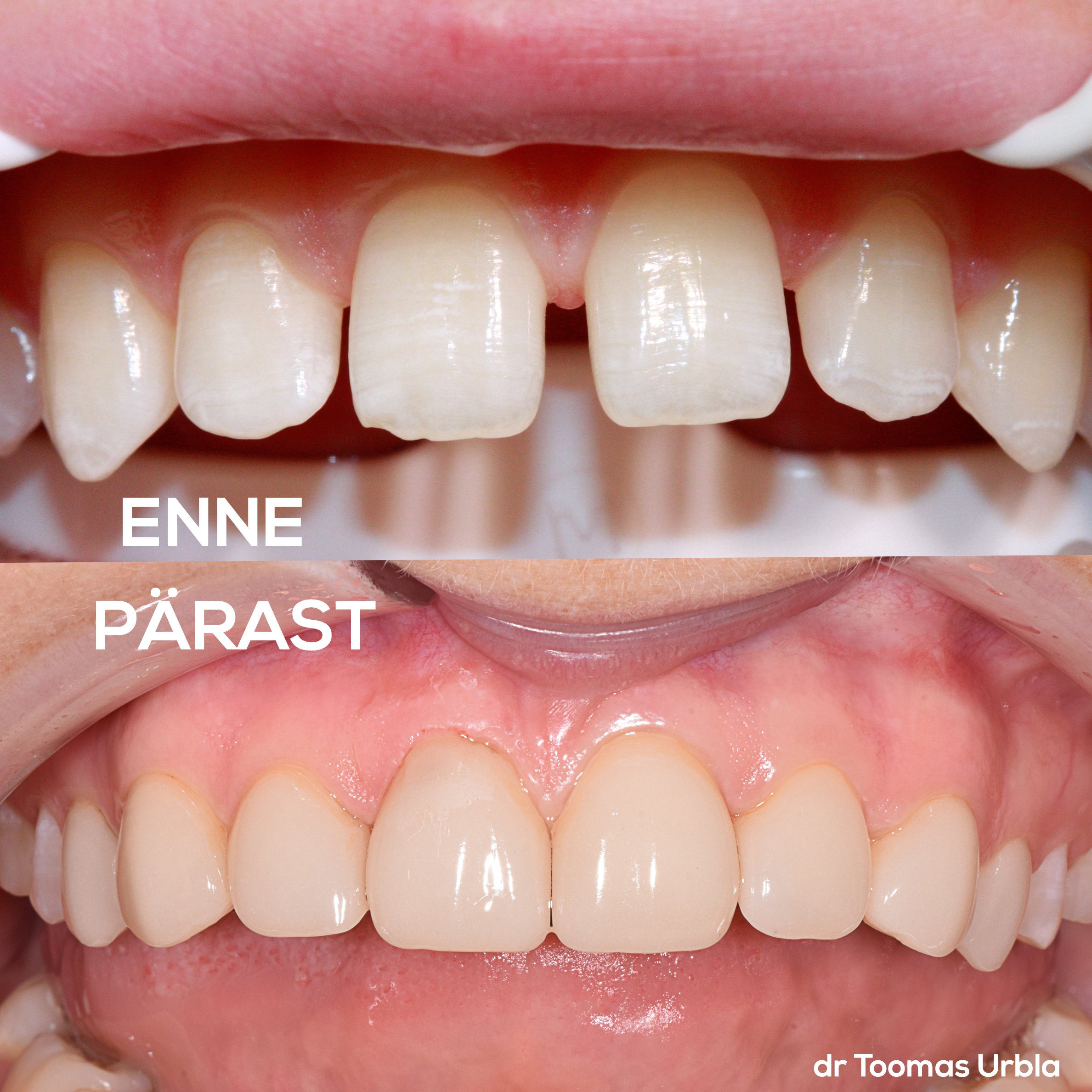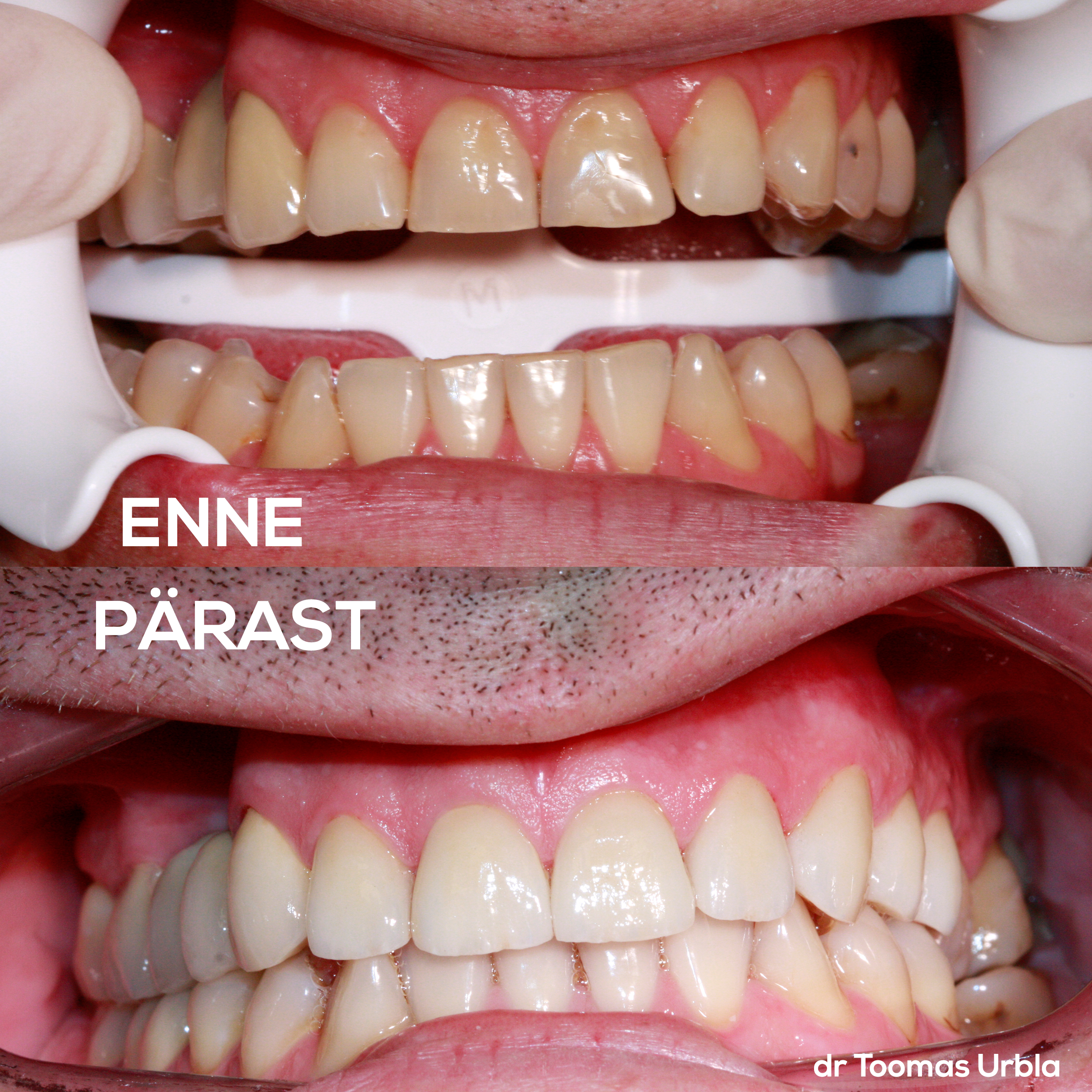DENTAL LAMINATES GIVE YOU A BRIGHT WHITE SMILE
Even if the teeth are more or less healthy, many people are bothered by the fact that their teeth are yellowish-gray, with small chips, cracks, and fissures. The good news is that you can have beautiful, white, and shiny teeth in just a few weeks with the help of new technologies.
This new method of improving the appearance of teeth is to cover them with ultra-thin, strong plates, or laminates.
Laminates are made of ceramic and their appearance and properties are similar to natural teeth to the point of being interchangeable.
Once the laminates are installed, the wearer will not feel any difference because they adhere tightly and imperceptibly to the teeth. Therefore, the use of laminates allows you to achieve a very natural and aesthetic result.
You can read below about what types of laminates exist, when to choose them, and which one is right for you.

Reasons to choose laminates
- They help make your smile more beautiful and allow you to achieve the so-called Hollywood smile;
- Laminates retain their color and structure throughout their lifetime;
- Laminates can be installed within an average of 2-4 weeks depending on the treatment plan and the chosen method;
- A wide range of shades: from natural to pearl white;
- Very durable, long lasting.
TYPES OF DENTAL LAMINATES
Laminates can completely change the appearance of teeth – restore shape, change color, and repair defects (chips, cracks, gaps between teeth, etc.). Depending on the installation method and the properties of the laminate, laminates are divided into NonPrep laminates, Lumineers, and classic laminates. Read more about each type below.
1. NonPrep dental laminates (porcelain)
NonPrep dental laminates are very thin porcelain crowns that cover the tooth either partially or completely, and when installed, the natural teeth remain unpolished or unprepared by the doctor. Ultra-thin ceramic plates are attached to the tooth using adhesive cement.
In which cases are NonPrep laminates suitable:
- Darkened tooth color;
- Dental anatomy requiring correction;
- Minor changes in tooth position;
- Anomalies of tooth positions that are not indicated for orthodontic treatment.
NonPrep laminates are handcrafted in the laboratory through a complex and time-consuming process from feldspathic ceramics. A thin layer of porcelain is applied to a refractory dental replica and fired at extremely hot temperatures in a porcelain firing kiln. The finished coatings are installed directly onto natural tooth enamel.
Using NonPrep laminates results in natural and beautiful teeth, and the teeth are also not damaged by grinding.
2. Lumineers
Just like NonPrep laminates, lumineers are dental covers that do not require grinding your teeth, meaning your teeth are left unprepared. Lumineers are also indicated for tooth shade adjustment and minor changes in tooth position and row, which are not indicated for orthodontic treatment.
Indications for lumineers:
- Rather smaller and rear positioned teeth;
- Unaesthetic shape and minor defects;
- Not very worn teeth;
- Cracks and fissures on tooth enamel;
- Discoloration and/or spots.
The difference with NonPrep laminates is in the manufacturing technology. Lumineers are made using the pressed ceramic method, meaning the laminate is pressed entirely out of the material. Thanks to the different colored cements, what makes lumineers special is the wide range of tinting options.
Lumineers are used by prosthodontist Dr. Toomas Urbla of the Novira Plaza Clinic of Tallinn Maxilla Dental Clinic.
Before/after
3. Classic laminates
Classic dental laminates are also used to treat the aforementioned indications, but to install classic laminates, your teeth must be minimally polished or prepared. Thanks to this, it is possible to correct larger defects in tooth position and ensure the strength of the laminates to correct larger anomalies.
Indications for classic laminates:
- More filled teeth;
- Microcracks within the enamel;
- Severely darkened tooth surfaces;
- Incorrect occlusion height or one that needs to be changed;
- Larger gaps or broken fragments.
Classic laminates before and after the work performed.
The following dentists perform work with classic laminates at Maxilla Dental Clinics:
Tallinn Novira Plaza
Dr Toomas Urbla
Dr Piret Pihkva
Tallinna Rotermanni
Dr Mõkola Kondrin
Dr Kristo Ivanov
Dr Pille Soom
Dr Rita Ždanovitš
Tartu
Dr Tiina Saar
Dr Jana Annuk
Dr Martin Metspalu
Which type of dental laminate should I choose?
The experienced dentists at Maxilla Dental Clinic will help you determine the most suitable treatment solution. The time required for the preparation and installation of laminates depends on the chosen method and is determined when the treatment plan is drawn up. The occlusion height and the contacts of the upper and lower jaws determine the choice between NonPrep laminates, Lumineers, or classic laminates.
Book an appointment and discuss the best option for you with your dentist.

